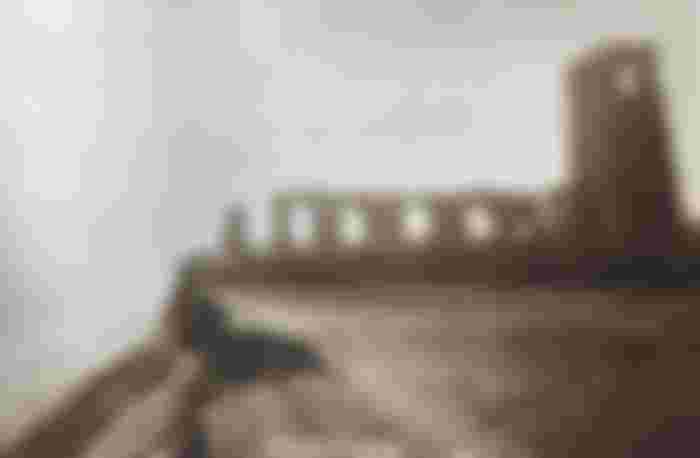Dunwich A Lost City's Haunting Legacy
Dunwich used to be a bustling coastal city back in the day, but now it's all underwater along the Suffolk Coast. Like, over centuries, the ocean just ate it up, turning it into this spooky symbol of loss that's fascinated artists, poets, and history buffs for ages.
So, in 1922, the city finally gave in to the sea, and the last thing standing, this Gothic church tower, just crumbled onto the beach. It got all mixed up with the graves from the churchyard, which had been there forever. This old ruin on top of a cliff, it looks super eerie at sunset or sunrise, and it's become this famous image. People took tons of pictures and made postcards of it, and it's all kind of creepy and beautiful at the same time.

"Photograph of All Saints’ Church, Dunwich, before it went into the waves, from the Nicholson Collection of postcards at Dunwich Museum, ca. 1910" - Source
The All Saints' Church used to be way farther from the edge of the cliff, but the sea was like, "Nah, I'm coming for you," and slowly swallowed it up. By the 1700s, it was a lost cause. In Victorian times, it was just abandoned and left to the ocean, and all that was left was a little piece of it. The sad story of Dunwich, it's all in those old yellow postcards, and it's super captivating.
Before it went under, All Saints' was one of three old ruins up on a cliff looking out at the North Sea. Dunwich was huge back in the late 1200s, like as big as London with 10,000 people, but then there were these really bad storms in 1288 and 1328, and that started its slow sinking.
Famous people like Charles Keene, who was an illustrator for Punch, and the famous writer Henry James came here for inspiration. Even Edward FitzGerald, a poet and translator, spent whole summers here. They all left behind letters, essays, drawings, and diaries talking about how cool and sad this lost city was.
Dunwich also got the attention of John Day, a big-time publisher from the Reformation, who was born here. He got John Stow, a historian, to dig into the city's mysteries. Stow did some serious detective work and figured out how big the city used to be and how it went down. He basically busted some myths about its past glory.
As time went on, Dunwich's trade went down, people moved away, and the fishing biz started tanking. More storms and erosion made it even worse. By the 1600s, the only food people had were sea-peas, and the once-buzzing industries were pretty much dead.
But even with all that sad history, when you visit Dunwich today, the ruins are still super fascinating. The leftovers of Greyfriars Monastery, the falling arches, and the crumbly walls all remind us of what this place used to be. It's like a time capsule, making us think about how fragile our own towns might be. Could they end up like Dunwich, slowly swallowed by the sea?
So, as we stare out at the ocean where Dunwich once stood, it makes us think about the past and how it's still kinda there in those fading remains. And it makes us wonder how many other places might share Dunwich's fate, getting eaten up by nature's unstoppable forces. Dunwich's story is like a big reminder of that.
Thank you for reading!

I wish I could go there.
Welcome back bro. It's good to see you too here again.